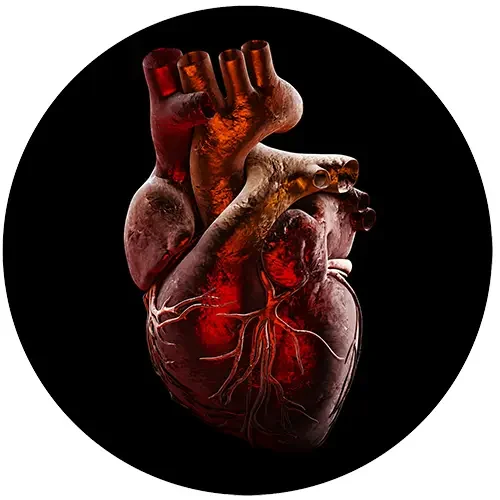What would you experience?
Sometimes it is obvious that you are about to faint. But sometimes it is not even obvious that you have fainted - although clues like suddenly finding yourself on the floor may help you figure that out! Since it is possible to faint when you are already lying down, even that is not always obvious.
Your field of vision may "white/black out" or become very narrow. Your skin may be cold and clammy before you faint. When you faint, you lose muscle control and may fall down. You may feel nauseated or have diarrhea. Your skin may be very sweaty. Sometimes people feel heaviness in their legs. You may feel very warm. You may feel an urge to yawn repeatedly. And of course you may feel light-headed or confused.
What is going on when you faint?
The decrease in oxygen to your brain causes the changes in your field of vision. When oxygen levels to the brain decrease, the body shuts down non-vital parts to redirect resources to vital organs as a survival mechanism. When low oxygen levels to the brain are detected, breathing and heart rate normally increase to send it more oxygen. This in turn reduces blood pressure in other parts of the body.
What are the causes?
Many things can make you faint. The medical causes fall mainly into three categories: heart problems, reflex problems, and orthostatic hypotension (standing up too fast). All of these can be significant for HCM patients.
Some arrhythmias can cause you to lose consciousness. Some of them cause pauses between heart beats. Others cause the overall output of your heart to decrease. If your obstruction is severe enough or you have severe valve disease, it may sometimes cause very low blood pressure in your brain. If your overall blood pressure is very low, the blood pressure in your brain may also drop too low. A very slow heart rate (bradycardia) can also cause the blood pressure in your brain to be too low.
But your heart may be involved more indirectly as well. Some common problems with reflexes can cause syncope. The most common has several complicated names including neurocardiogenic syncope and vasovagal syncope. This is essentially a miscommunication between your brain, your heart, and your blood vessels. It can cause the blood vessels in your legs to open widely, pooling the blood there and depriving your brain of blood. What makes things worse, it also causes your heart rate to drop. If you are obstructed, this greatly increases your gradient and can be dangerous. Everyone has had the experience of some momentary light-headedness from standing up quickly. This can be the result of something as simple as dehydration. It can also be caused by some medications, including many that HCM patients may use, including some to reduce blood pressure. Other drugs can also have this effect. Patients with diabetes or amyloidosis can also be prone to orthostatic hypotension, because these diseases may affect their nervous system's ability to control blood pressure and blood pooling in the veins.
Of course there are other causes of fainting as well. Carbon monoxide poisoning is an example. Carbon monoxide (often from automobile exhaust) has a greater affinity with your red blood cells than oxygen does. In an environment with excess carbon monoxide (like a car running inside a garage) your blood cells will carry too little oxygen, and fainting (and perhaps death) results.
There are neurological causes of fainting as well. Seizures and transient ischemic attacks ("mini-strokes") are less common than the heart-related causes. But they are medically serious.
In general, you will not be able to identify the causes of your syncope by yourself, and should leave that to your doctor. This is especially true if you are still on the floor - that is a remarkably bad time to decide that you understand what happened and that you don't need attention!
How are syncope and near-syncope treated?
There are important steps that can sometimes stop a person from completely losing consciousness. The goal is to raise the blood pressure in your head. Lie down and elevate your legs! Squeezing something with your hands (even squeezing your hands together) can help force more blood back towards your brain. Crossing your ankles and squeezing the muscles in your legs, buttocks, and abdomen can be very helpful. Stay down until well after you start feeling better.
If someone with you has actually fainted and is unconscious, make sure their airway is clear and check for breathing. If there is no sign of breathing or circulation, bystanders should start and continue CPR until help arrives or until the person starts breathing on their own. If they start breathing on their own, you can help them into the recovery position and stay with them until help arrives. If they are bleeding after the fall, apply direct pressure to control the bleed.
To be safe, treat every case of fainting as a medical emergency until the cause has been determined.
When you can do so safely, take measurements of vital signs: heart rate, blood pressure, and if a personal heart monitor is available, an EKG. These can provide essential information later for the doctors to have. "Safely" means that you should not get up to find your blood pressure monitor!
Talk with your doctor. If you completely lose consciousness, when you awaken you should certainly seek medical assistance. Your cardiologist may use a number of diagnostic tools to see if you have new rhythm problems. These include EKG, Holter monitors, event monitors, or loop recorders. Your doctor may also perform an echocardiogram to see if your obstruction has worsened or there are new structural problems. Treatment will then depend on their findings.
When there is strong suspicion that the syncope is caused by a reflex problem, many cardiologists will prescribe a tilt-table test. This is normally done in an electrophysiology lab. You are placed on a table, and gradually the table is tilted, until you are in a nearly-upright position.
If this doesn't provoke a response (light-headedness, changes in heart rate or blood pressure) they may administer a drug called isoproterenol which can sometimes help the nervous system to respond. A response is meaningful, but false negative results are common (sometimes as much as 30%) in tilt-table testing. There is currently no treatment for vasovagal syncope. If you are given this diagnosis, become aware of the first aid measures described above!










